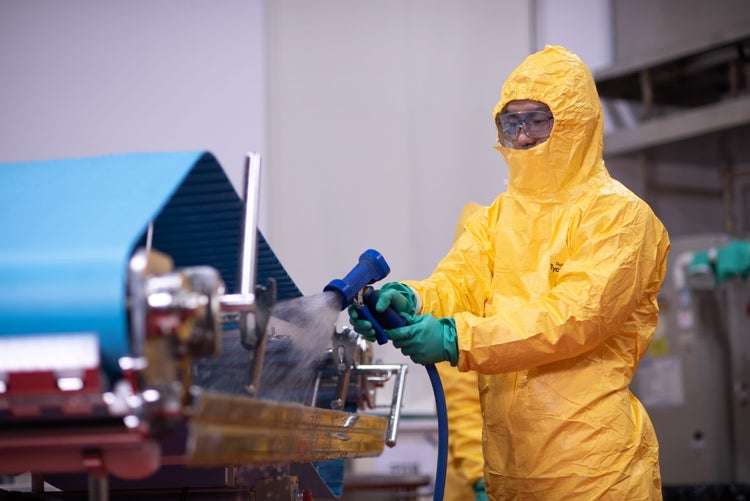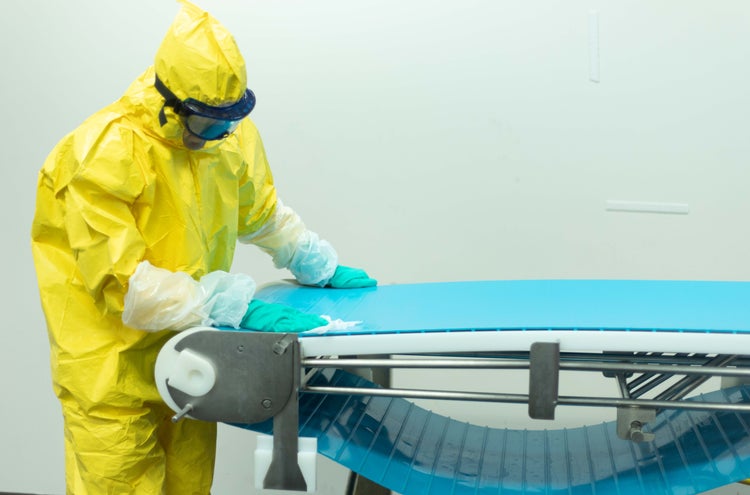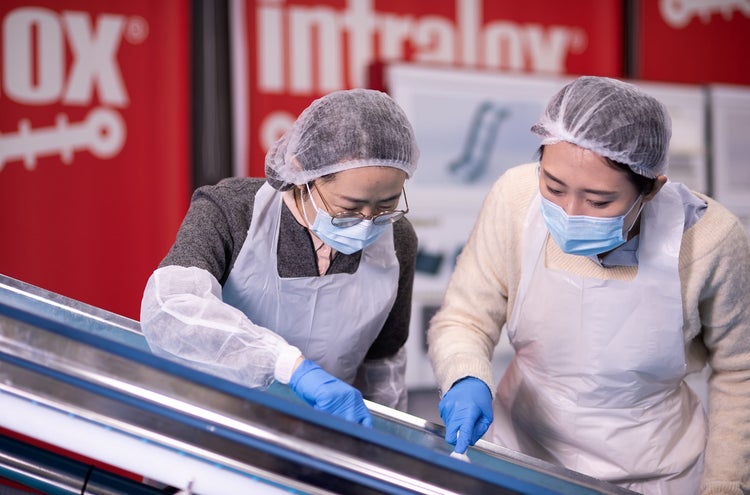Wet vs Dry Cleaning (Part one)

Prior to working in a bakery/snack food plant, I spent several years in a Coca-Cola Enterprises bottling facility. I had responsibility for sanitation as quality manager. With this background, my experience entering the baking and snack industries was cleaning with water and detergents to ensure a sanitary environment. This was how we achieved “clean” using a wet clean. This all made sense working in a carbonated beverage facility.
I have learned much since then, and one of the important lessons is this: Before you begin cleaning, understand the purpose and goal, and design your plan accordingly. If you are cleaning for microbiological reasons, or possibly for chemical reasons such as allergens, or you’re cleaning to control foreign material or buildup of product that resembles foreign material in finished product, you must meet the sanitary goal. Oftentimes, a bakery could be trying to accomplish all these things. However, the main objective needs to follow the criteria for success, and, once defined, a Sanitation Standard Operating Procedure (SSOP) can be created to meet, validate and verify it.
Sanitary operations require a standardized plan with measurable goals, but knowing how to achieve them is critical.
After working in the beverage industry, the world of baking and snack was a significant change. My first experience in this segment of the food industry was in a facility with five floors and multiple expansions added over time. It was unfriendly to clean and maintain due to the poor sanitary design of the equipment and facility.
Based on my previous experience in beverages, my solution was wet cleaning … until I realized that some floors were wood. Others were concrete, but even the concrete floors had limited drains. It was a dusty environment, and the available utilities for cleaning were dramatically different than my experience in a beverage plant. Oh, and there was a 50-gal hot-water tank, hardly enough to last for wet cleaning.
What to do? How do you clean a dry facility without water? Is that possible? Dry cleaning sounded like an oxymoron, like taking a dry shower in the morning.
I had much to learn.
Obviously, we know much more today about microbiology in low-moisture foods, as well as allergens and sanitary design. However, the legacy designs from the past are still with us and are still very difficult to clean. So, the question that comes up often is: In any given circumstance, what is the best method for cleaning to be effective and efficient? “Wet or dry?” That is still the question.
Understanding when to use wet or dry is critical as bakers look to meet sanitation goals.
Unfortunately, there is not a perfect answer for any given manufacturing facility. Instead, there needs to be a compartmentalization of a facility’s areas that require wet cleaning and which ones require dry. One challenge is that some unsegregated areas still have segments of the line that need to be either wet or dry cleaned, and some moisture may drift over to an area intended to remain dry.
There is a “war on water” in the baking industry. It focuses heavily on reducing or stopping the use of water in dry facilities unless absolutely necessary. The use or presence of water — or even moisture — is a significant risk factor for contamination. If present, water allows pathogen growth and is an excellent and efficient way to spread pathogens throughout a facility. A major concern is the transfer of pathogens through puddles, roof leaks, condensation and aerosols from the use of water hoses that may be carried to dry areas by air currents and other means.
Understanding when to use wet or dry is critical as bakers look to meet sanitation goals.
Editor’s Note: This is the first of a two-part column on wet vs. dry cleaning. Part Two details more information on dry cleaning techniques and when to apply wet, dry or a combination of both.




